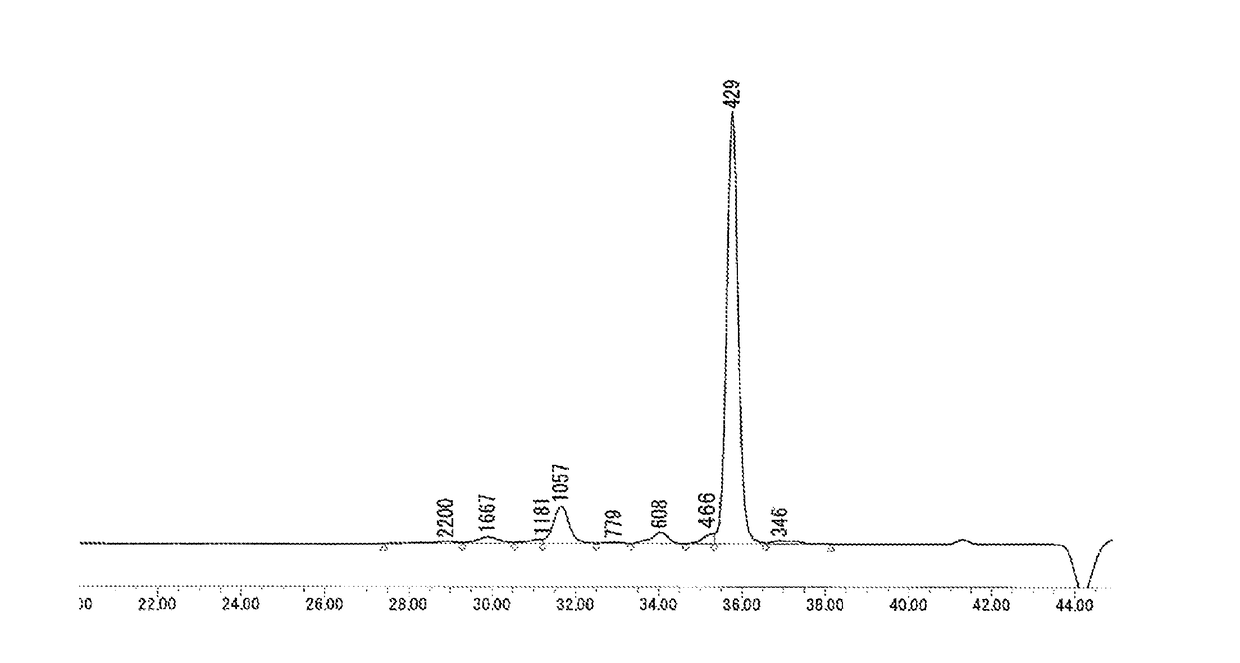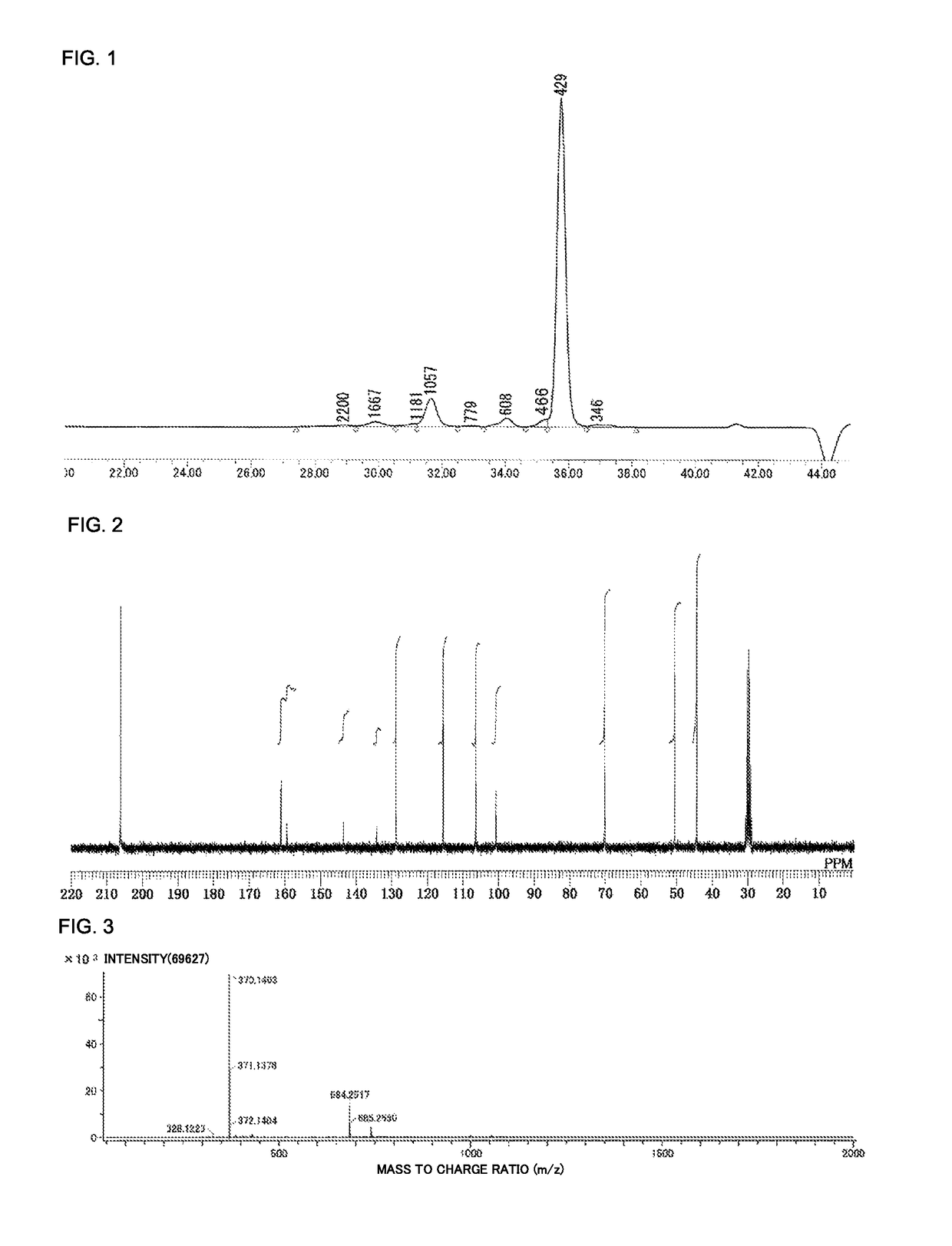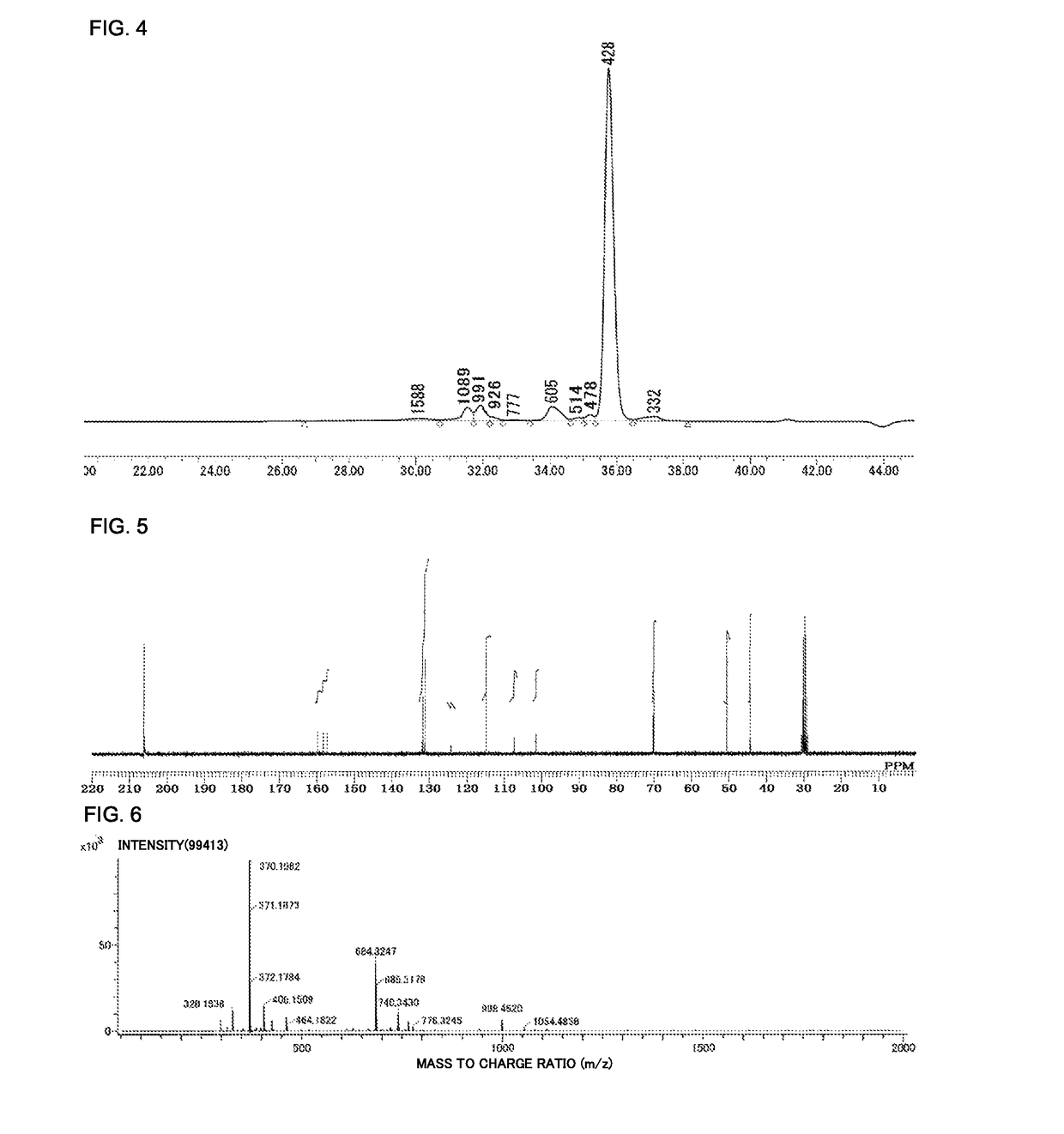Method for producing biphenyl-skeleton-containing epoxy resin
a technology of biphenyl skeleton and epoxy resin, which is applied in the field of producing biphenyl skeleton-containing epoxy resin and epoxy resin, can solve the problems of insufficient correlation between multifunctionalization and increase in molecular weight, and achieve excellent solvent solubility, excellent heat resistance, and low melt viscosity.
- Summary
- Abstract
- Description
- Claims
- Application Information
AI Technical Summary
Benefits of technology
Problems solved by technology
Method used
Image
Examples
synthesis example 1
Synthesis of 3,4′,5-Methoxy Biphenyl
[0118]A solution in which 110 g of 1-bromo-3,5-dimethoxy benzene, 257 g of isopropyl alcohol (hereinafter, referred to as IPA), and 139 g of potassium carbonate were dissolved in 107 g of water in advance was put into a flask attached with a thermometer, a stirrer, and a reflux cooler while performing a nitrogen gas purge, and nitrogen substitution was performed in a reaction vessel while stirring the solution, and then 5.9 g of tetrakistriphenyl phosphine palladium (0) was added to the solution, and a solution in which 83 g of a 4-methoxy phenyl boronic acid was dissolved in 109 g of IPA in advance was dripped thereto. A reaction liquid was heated and refluxed for 3 hours, and then 500 mL of water was added to the reaction liquid, an IPA layer was separated, and a water layer was extracted by being moved to a separating funnel and by adding 500 mL of toluene. Each organic layer was washed with a saturated solution of sodium chloride. A solvent wa...
synthesis example 2
Synthesis of 3,4′,5-Trihydroxy Biphenyl
[0119]100 g of the 3,4′,5-trimethoxy biphenyl obtained in Synthesis Example 1, 488 g of sodium iodide, and 628 g of acetonitrile were put into a flask attached with a thermometer, a stirrer, and a reflux cooler while performing a nitrogen gas purge, and then 356 g of trimethyl silane chloride was dripped thereto, and a reaction was performed at 50° C. for 18 hours. A reaction liquid was cooled to room temperature, and 500 mL of water was added thereto. The acetonitrile was distilled under reduced pressure, 1 L of ethyl acetate was added thereto, a mixed liquid was moved to a separating funnel, and an organic layer was separated, and then a water layer was extracted by the ethyl acetate. The combined organic layer was washed with an aqueous solution of saturated sodium hydrogen carbonate and a saturated solution of sodium chloride. An ethyl acetate solution was concentrated to approximately 200 mL under reduced pressure, and a crystal having the...
synthesis example 3
Synthesis of 2,4,4′-Trimethoxy Biphenyl
[0120]A solution in which 110 g of 1-bromo-2,4-dimethoxy benzene, 257 g of IPA, and 139 g of potassium carbonate were dissolved in 107 g of water in advance was put into a flask attached with a thermometer, a stirrer, and a reflux cooler while performing a nitrogen gas purge, and nitrogen substitution was performed in a reaction vessel while stirring the solution, and then 5.9 g of tetrakistriphenyl phosphine palladium (0) was added to the solution, and a solution in which 83 g of a 4-methoxy phenyl boronic acid was dissolved in 109 g of IPA in advance was dripped thereto. A reaction liquid was heated and refluxed for 3 hours, and then 500 mL of water was added to the reaction liquid, an IPA layer was separated, and a water layer was extracted by being moved to a separating funnel and by adding 500 mL of toluene. Each organic layer was washed with a saturated solution of sodium chloride. A solvent was distilled under vacuum, and then a precipit...
PUM
| Property | Measurement | Unit |
|---|---|---|
| temperature | aaaaa | aaaaa |
| temperature | aaaaa | aaaaa |
| temperature | aaaaa | aaaaa |
Abstract
Description
Claims
Application Information
 Login to View More
Login to View More - R&D
- Intellectual Property
- Life Sciences
- Materials
- Tech Scout
- Unparalleled Data Quality
- Higher Quality Content
- 60% Fewer Hallucinations
Browse by: Latest US Patents, China's latest patents, Technical Efficacy Thesaurus, Application Domain, Technology Topic, Popular Technical Reports.
© 2025 PatSnap. All rights reserved.Legal|Privacy policy|Modern Slavery Act Transparency Statement|Sitemap|About US| Contact US: help@patsnap.com



